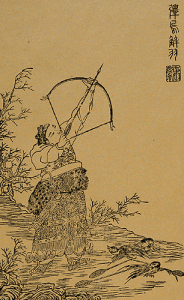 If we can interpret certain ancient myths correctly, they could lead us to more accurate and penetrating views of the history of the Earth and the solar system. They might teach us about the forces at work and explain anomalies bequeathed to us by a long-hidden past. But how can we interpret these myths, the products of minds so far removed from ours? How do we know which interpretation is correct, if any? Are we doomed to speculate without ever achieving certainty?
If we can interpret certain ancient myths correctly, they could lead us to more accurate and penetrating views of the history of the Earth and the solar system. They might teach us about the forces at work and explain anomalies bequeathed to us by a long-hidden past. But how can we interpret these myths, the products of minds so far removed from ours? How do we know which interpretation is correct, if any? Are we doomed to speculate without ever achieving certainty?
Here we will interpret two Bronze Age myths to illustrate the high scientific value such myths might contain. We will also see how easy it can be to understand a myth once the right interpretation becomes available.
Metis
The first myth is the Greek one of Metis, the mother of Athena. After impregnating her, Zeus turned her into a fly that flew into his mouth. Metis gave birth to Athena, who then sprang forth fully armed from his head. Researcher Immanuel Velikovsky interpreted the Athena myth to mean that Venus (the early Greeks called it Boseidon, the bull of heaven, or Athena, A Fena, the Phoenician, rising in the East) had fissioned off of Jupiter as a comet that then entered the inner solar system, where it repeatedly approached Earth. The ancient Hindus devised a similar myth, that Shukra (Venus) emerged from the mouth of Shiva (Guru or Jupiter). Velikovsky chose not to interpret Metis, though he was aware of her myth. Perhaps it didn’t fit his theory of the origin of Venus, or perhaps he just overlooked it. Velikovsky’s theory touched off a bitter controversy that went on for 30 years, and has continued in a more subdued but also more fruitful way up to the present. His radical explanation of the origin of Venus was #1 in a list of his errors that physicist Carl Sagan compiled.
One year before Velikovsky passed away in 1979, two researchers 2 offered a simple solution that overcame objections critics had made to Velikovsky’s theory of the origin of Venus. They argued that Jupiter’s gravitational field pulled Venus past the gas giant, with tidal friction turning it into a comet that then raced off into the inner solar system. They did not, however, mention the Metis myth. But now we can see that the Metis myth nicely depicts the trajectory of a proto-Venus being pulled from the outer solar system toward Jupiter. Thus it strengthens the already persuasive case argued by the two researchers.
Archer Yi
The second myth is the Chinese one of Archer Yi (Houyi).
The large body of Venus blocked sunlight from the central portion of its cometary tail, leaving two long bright streaks on the sides. In the Near East and Greece, these were seen as horns, so Venus was called the Bull of Heaven. In China, the curve of the body of Venus and the two streaks were viewed as a bow; the mythical Archer Yi with his vermilion bow was Venus. While one version of the myth had Yi shoot down nine of ten suns appearing simultaneously in the sky because they made the Earth too hot, there was a vigorous competing version that spoke of the sequential appearance of ten suns. In effect, as the Sun followed a different track across the sky on each day of an inversion of Earth caused by approaches of Venus (one of four such inversions between 2250 and 750 BC), Yi’s bow, directed by the solar wind, would track the new Sun. The ten suns, termed a 10-day event, were reported as an ill omen at the ends of the Xia dynasty (Bamboo Annals) and of the Shang dynasty (Huainanzi, 15/6b).
The sequential Archer Yi myth can basically be interpreted as a Venus myth. But it is much more. It provides intricately matching evidence of the inversions of Earth during the extraordinary 10-day events. These were characterized as inauspicious. Rightly so: they caused terrible floods, droughts, earthquakes, and volcanic eruptions. Thus this myth supports Velikovsky’s second main theory: the Theory of the Reversing Earth. It is a neatly fitting myth for a sensational phenomenon of great historical and scientific interest; the precise fit tells us that it is correct. Also, as long as one knows about the Venus theory and the Theory of the Reversing Earth, this interpretation is easily understood by any intelligent 10-year old, and thus should be understood by professional planetary scientists who hitherto have wrongly dismissed myths as devoid of scientific value. While initially interpreting an ancient myth can be challenging, understanding the correct interpretation of a myth once it is made is an easy task.
Some myths are fanciful; others can contain valuable scientific insights.
